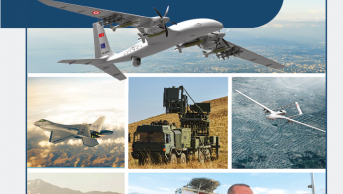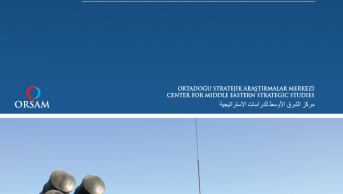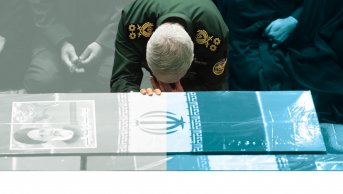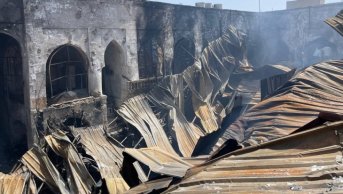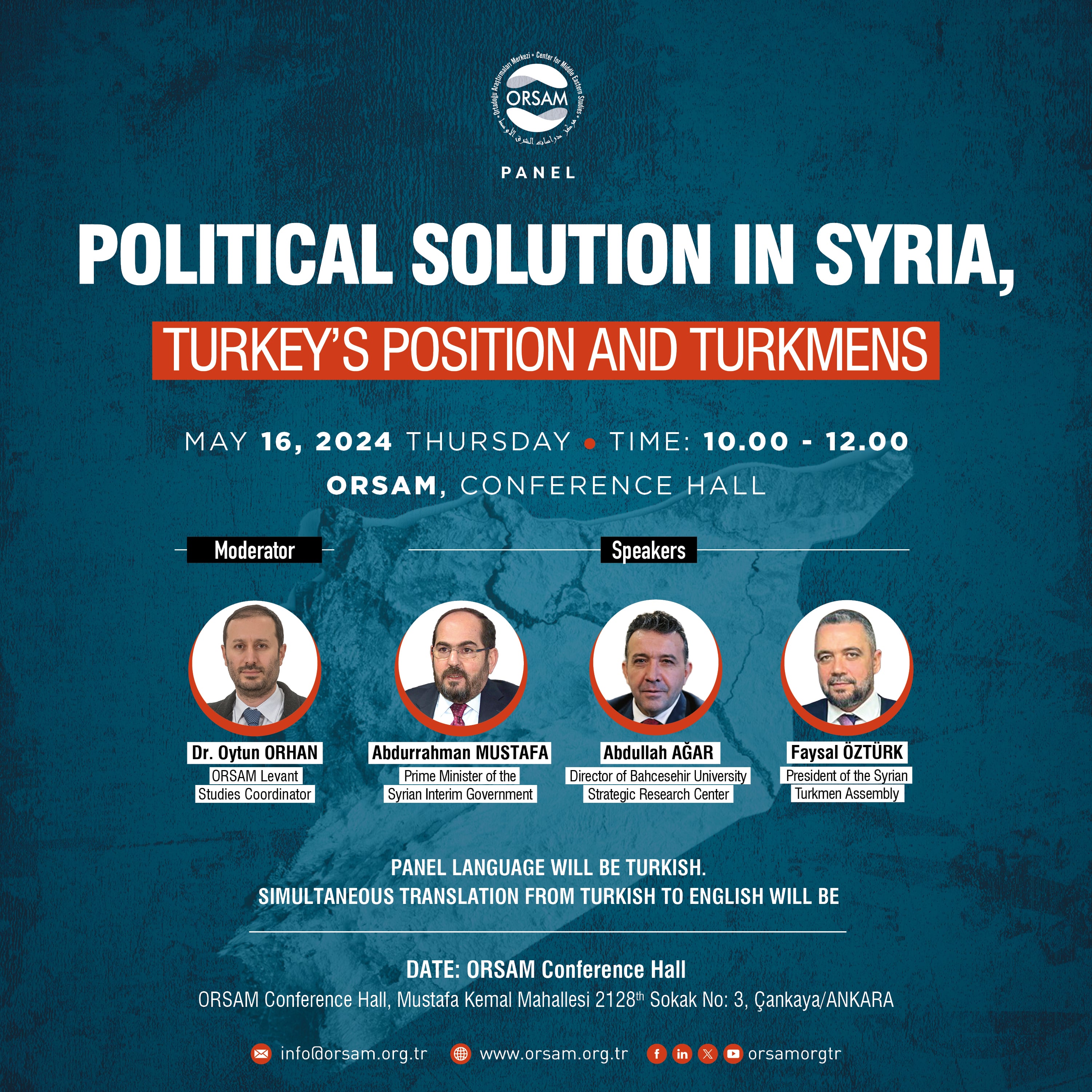IDEX 2017 and Defense Market of the Middle East
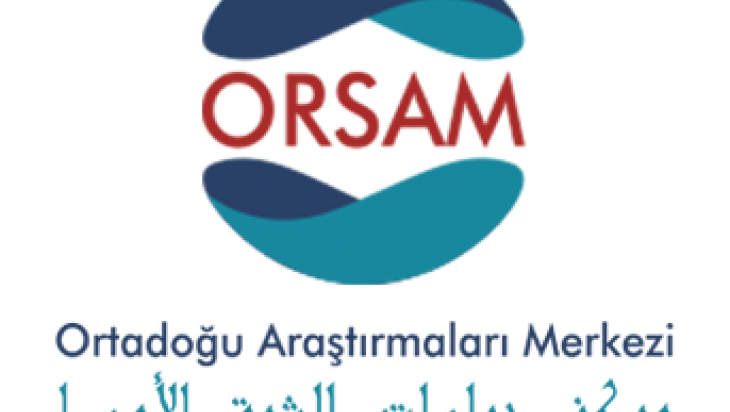
The International Defense Exhibition and Conference 2017 IDEX) and 2017 The Naval Exhibition and Conference 2017 (NAVDEX) held in Abu Dhabi, United Arab Emirates (U.A.E.) in 9-23 February. Two exhibitions highlighted security and defense agendas of the Middle Eastern countries. More than 1.200 companies from 57 countries carrying business in defense and security areas exhibited their products and solutions in exhibitions.
Fight against ISIS, Yemen operation and military rivalry between Iran and Gulf countries were among the topics dominated the exhibition. The exhibited products and solutions revealed the needs of modernization and supply needs of the regional countries. It was apparent that regional countries, especially host country U.A.E., were giving high importance to the domestic defense industry capabilities. Operation in Yemen had started with an air raid of the Saudi Arabia-led coalition. However, the raid turned into an operation in which all forces involved, with the blockade of Yemen by warships and with the intervention of the ground troops. The use of the ordnance in high quantities of the coalition increased the need for artilleries and air to ground weapons. A similar situation is also valid for Iraqi security forces in their fight against ISIS. Specifically, the use of guided air to ground munitions has been far beyond the estimations. The primary reason for the high quantity use of ordnance can be considered that organizations like ISIS, act in small groups with high maneuverability. Detection, identification, tracking and prevention cycle need to be completed at short notice in order to fight against such threats. Therefore, the importance of the unmanned aerial vehicles (UAV), air-guided missiles and bombs, and guided artillery ammunition is increasing. This tendency could be observed in the exhibition of guided and conventional ordnance.
Chinese Move
China became the most remarkable participant of the IDEX 2017. Eight Chinese companies exhibited a wide range of products and systems. China's participation on large scale in IDEX, the most important defense event of the Middle East, can be interpreted as a desire of China to increase its penetration in the regional market. Indeed, non-US and non-Europe suppliers are increasing in the region due to the fight against ISIS and Yemen operation. In this context, China's cooperation with Egypt, Saudi Arabia, Iraq and U.A.E. in the defense industry has evolved significantly in recent years.
NORIN-CO one of the eight Chinese companies under the auspices of the Ministry of Science and Technology of the People's Republic of China, exhibited its ground systems and ordnance. VT5 light tank, multiple barrel artillery rockets, armored personnel carrier vehicles and armored combat vehicles were among the products exhibited by the company. These products had introduced to the public for the first time in last November.
Artillery systems offered by China kept an important place. SR5 and AR3, multiple rocket launcher (MRL) system and important inventories of Middle Eastern armies were exhibited by NORINCO while A200/300, M20 and WS-3A / 33 / 43 were put in display by ALIT. Bahrain had received four SR5 systems which can be considered as equivalent of American HIMARS in 2016.SR5 is capable of firing 220-mm and 122-mm rockets. A300, guided artillery rocket produced by ALIT, can be used in TLC, a MRL system developed by Al Jaber Land Systems Company from U.A.E. It is known that U.A.E. had provided its land forces with artillery rockets produced by ROKETSAN, a Turkish company.
UAV systems were among the most prominent Chinese products. China had recently attained a remarkable place in the unmanned systems market and it has now also captured significant sales numbers of UAV from CH series in the Middle East.
According to the database of the Stockholm International Peace Research Institute’s (SIPRI), in 2015, Iraq took delivery of Chinese CH-B model UAV equipped with four weapons. These types of UAVs use AR-1 guided missiles and FT_9 guided bombs in the operations against ISIS. Following Iraq, Egypt had ordered the purchase of unknown amount of armed CH-4. CH-4B model UAVs is known to be used by U.A.E. and Saudi Arabia in Yemen. In addition to the CH-4B, UAVs from Wing Loong series produced by Chengdu Company are used by U.A.E., Saudi Arabia and Egypt.
On the other hand, in 28 February the Chinese Xinhua News Agency declared that Saudi Arabia came to an agreement with China on licensed-production of UAVs from CH series. This agreement may lead to increased Chinese activities in UAV market of the Middle East.
U.A.E. is an important exception for Chinese success in the Middle Eastern UAV market. U.A.E. has given a purchase order of Predator XP UAV systems worth USD197 million to American General Atomics Company in 2015. Predator XP is an unarmed version of RQ-1 Predator in the US Air Forces' stock and capable of staying in the air for up to 35 hours. Project's scope in the terms of the number of aircrafts and ground control station had not been declared.
Signed Contracts
The exhibition witnessed several contracts of U.A.E. Throughout the exhibition defense acquisition contracts amounting 1.4 billion dollars were signed.
An important development concerning Turkey occurred during the exhibition. OTOKAR, armored vehicle producer and Tawazun from U.A.E. specified corporate charter for AL Jasoor, a joint venture company in order to co-produce 8x8 wheeled armored combat vehicles for the needs of U.A.E.'s army. New version of Arma, armored vehicle developed by OTOKAR, will be produced by Al Jasoor under the name of Rabdan in U.A.E. and will be modified in compliance with the needs of U.A.E.'s army. Al Jasoor, 49% of its shares owned by OTOKAR, is expected to produce and deliver around 700 of Rabdan.
Additionally, a contract has been signed between American Oshkosh and U.A.E.'s army for the purchase of 750 Mine Resistant Ambush Protected (MRAP) armored vehicle worth $381 million. M-ATV type vehicles mentioned in the contract, are also replacing HMMWV tactical wheeled armored vehicle known as Hummers in US army' stock. U.A.E.'s losses during Yemen operation and threats of handmade explosives (HME) in the Middle East increased the demand for MRAP armored vehicle. This increase in demand also showed itself in the exhibition with the variety of the armored vehicles. Another remarkable contract signed during IDEX was U.A.E.'S supplementary purchase order for Predator XP to American General Atomics. Predator is a export version of its UAVs.
U.A.E. has also signed a 710 million dollar contract with Russian Rosoboroneksport for the supply of Kornet guided anti-tank missiles. U.A.E. military uses these missiles in BMP-3 armored combat vehicles and Nmir Ajban 4x4 tactical wheeled armored vehicles. Vehicles in question had taken an active role in the Yemen operation. 354 million dollar purchase order was also given to the American Raytheon.
Tawazun from U.A.E. is also producing laser guided rockets with Raytheon license. U.A.E. purchased Cirit laser guided rockets from ROKETSAN and used them successfully in Yemen. Cooperation and technology transfer agreement signed between Tawazun and Belarusian State Military Industrial Committee was among striking events of the exhibition. The agreement which included maintenance and repairs of Russian BMP-3 armored combat vehicles of U.A.E. military, can be seen as efforts of Gulf countries to diversify sources of defense products and services in U.A.E.
Trends
Operation in Yemen and operations against ISIS are acting as determinant factors in agendas of defense acquisition and modernization projects of the regional countries. IDEX show was indication of this situation. In this context, prominent systems can be summarized as follows:
Improved armored land vehicles: Demand for vehicles with improved protection against handmade explosives (HME) to use in personnel and cargo transportation, greatly increased. Organizations such as ISIS are using HME in their advanced tactics. The threat posed by HMEs is higher in the areas without any front line, asymmetric warfare areas and especially cities. HMEs are not only harming combat troops, but they are also giving serious damages to supporting vehicles. As a result, in addition to the combat vehicles, using armored vehicles for personnel and cargo transportation become a necessity. Syria, Iraq and Yemen function as a laboratory in this regard.
Unmanned systems: Unmanned systems capabilities rapidly developed along with the advancement of technology. Such systems, primarily UAVs, can be used in many different tasks. Demand in the Middle East markets for unmanned systems is focused on UAVs operative in intelligence missions and equipped with armed reconnaissance systems and different sensor systems .China dominates the market on UAVs related to armed reconnaissance missions. The most important factor in this situation is, the United States and Israel' being the two most prominent manufacturer in this area. Israel is not an important factor in the Middle East market for obvious reasons. On the other hand, export policy of US on UAVs is highly strict and restrictive. Even, U.A.E. with its close relations was only able to purchase unarmed Predator XP. For Europe, there is no equivalent platform. Therefore, China stands out as an attractive alternative due to its low cost products and lack of its political constraints.
Due to the increased need for surveillance in Gulf maritime traffic and large land areas, a high demand on UAVs equipped with sea surveillance radars, electronic signals intelligence (ELINT) and signals intelligence (SIGINT) along with electro-optical cameras occurred in the market of UAVs operative in the missions of reconnaissance surveillance and intelligence.
Explosive detection and disposal systems: Flexible and innovative capabilities of terrorist organizations on the development and usage of the HME outclassed the intelligence and security services of most of the countries. Technologies regarding to the detection and annihilation of these kinds of threats became primary concern for the defense sector agendas.
Ordnance: Fight against ISIS and Yemen operation revealed that the expenditure rate of conventional and guided ordnance is far beyond the estimations and expectations. This led to the need of quick replacement of the ordnance stocks for the countries that operate active military actions. Moreover, as organizations such as ISIS move in small groups with high maneuverability by employing hit-and-run tactics, the detection, identification and later annihilation of such organizations in a short time become essential. Therefore, a low cost but high accuracy guided artillery ordnance and air to ground (attack helicopters and assault aircrafts and UAVs) guided bombs and missiles has increased in demand.
Conclusion
IDEX and NAVDEX highlighted effects of the oil prices on Gulf countries' defense acquisition programs. Total worth of contracts signed in the exhibition was pretty lower compared to previous contracts signed. This economic situation pushes Iraq and Saudi Arabia to look for cost-effective alternative sources. In this context, it can be said that countries such as China and South Korea stand out. It is certain that fluctuations in the oil prices will directly affect preferences and priorities in the defense market of Middle East.
In the last 10 years, Middle Eastern countries, primarily U.A.E. and Saudi Arabia, have used defense acquisition programs as a means to develop their domestic industries. Offset, foreign partners and joint venture models, technology "know-how" transfer become the first priority of these countries. For this reason, foreign defense companies that want to conduct business in Gulf region, has sped up their search for domestic partners.
The combination of urgent needs that came to the fore with the Yemen operation, and difficulties encountered while meeting them motivated Middle Eastern countries to search alternative sources. In this framework, shares of China, South Korea, Ukraine and South Africa in the market increased prominently. With their attractive offers for technology transfer and joint development, these countries began to sign increasing amounts of contracts and turn into a serious competitor in the market in which US and European countries had been a monopoly.
In consequence, Middle Eastern market constitutes significant potential for Turkish defense industry given regional dynamics evaluated accurately and consistent strategies followed. Turkey needs to export systems and solutions with high added value in order to maintain its returns from evolving defense industry and this could also lead to strengthen Turkey's position in other markets.

